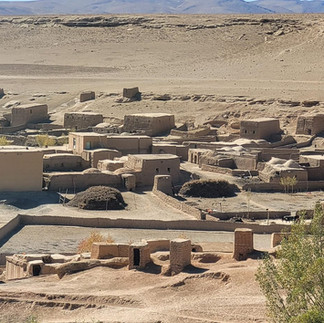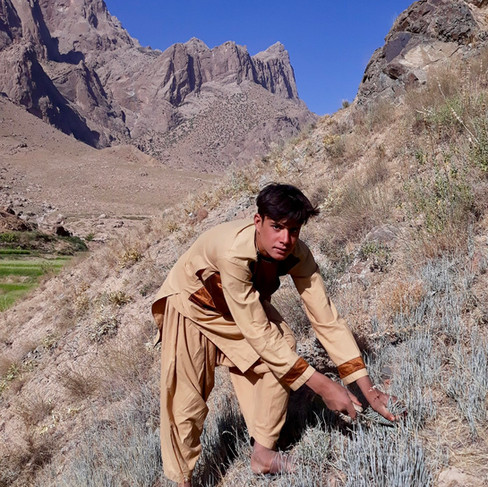I’ve had a lot of emails from governments, institutions and individuals following UNODC’s recent report on methamphetamine in Afghanistan. Most are sceptical of the findings and UNODC’s claim that OTC and bulk pharmaceuticals are the primary precursors for meth in Afghanistan and what they see as a corresponding lack of evidence.
Further confusion is expressed over the press coverage that has accompanied the report and the claim that methamphetamine trafficking is rising in response to the Taliban ban. An argument that makes little sense when reviewing evidence on prices, lab counts, and seizures of ephedra and labs destroyed -much of which is publicly available.
I have tried to refrain from commenting publicly as these critiques give me no satisfaction, however, a number of these contacts have encouraged me to engage and give them some pointers with which they can anchor their own justifiable worries regarding this latest UNODC report.
Having read the paper in detail its it is hard not to conclude that the paper is (i) technically weak and not grounded in Afghan realities (ii) disingenuous in its failure to engage with evidence that doesn’t fit its thesis that its bulk pharmaceuticals that are behind meth production in Afghanistan, and (iii) thoroughly misleading when it comes to the impact of the Taliban ban on meth production.
The primary concern is the absence of evidence to support the report’s primary thesis: that there is not enough ephedra in Afghanistan to produce the amount of meth being produced and bulk pharmaceuticals are likely to be the primary precursor as it offers more “efficient, reliable and virtually limitless means to support illegally manufacture compared to naturally occurring sources of ephedrine”
Now, no one has ruled out that other precursors could be in play (some of us have been looking for some time). But the report offers no evidence of bulk pharmaceutical ephedrine in-country: no supporting seizures, price data, or interviews of those involved in processing, it remains a hypothetical even based on UNODC’s own work.
The report does offer some insights into the use of Over the Counter Medicines (OTC) but even here UNODC’s own calculations show the costs of producing ephedra based meth is half that of OTC, and that “estimates here suggest ephedra may be competitively priced such that it is a desirable input material in Afghanistan”.
However, even on OTC, UNODC can’t help but over sell it arguing “production from cold medications [is] marginally profitable” despite the fact their calculations only factor in the costs of the tablets themselves (this is an oft repeated mistake in other UNODC publications where unfortunately they don’t seem to have a good grasp of the definition of “profit”).
Certainly, in Afghanistan cooks would disagree that OTC is even marginally profitable; it’s why it’s been hard to meet anyone that cooks with it. In fact, cooks argue they would make a loss using OTC given the costs of the tablets required to make a kilogram of meth of $709 exceeding that of the current price of meth ($680/kg). After all, why pay for imported medicines from other countries when we can use a crop that grows wild in the mountains.
Despite their own conclusion that ephedra is economically more viable than OTC and that there is no evidence of bulk pharmaceuticals, the larger part of the UNODC report is focused on ephedra based meth production and what appears to be a desire to prove that there is insufficient ephedra in Afghanistan to produce the amount of meth being produced.
The report then jumps through various hoops to suggest that there isn’t enough ephedra in-country. For those more engaged this seems an odd conclusion to reach given the physical evidence of the large area over which ephedra is grown, the volumes stored, and the number of ephedrine labs that have been found (and latterly destroyed) in-country.



But UNODC persist. They dismiss what we can see with our own eyes in videos, imagery, photos as “anecdotal”. It often feels like a Jedi mind trick - “these are not the droids you are looking for”.


They even reference an Alcis product that contains imagery, photos, and video footage from Abdul Wadood bazaar to extract a conversion rate for ephedra to meth and ignore the evidence that on one day 27 November 2021- in one bazaar (AWB) over 9,000 MT of ephedra was stored for all to see. Again, hard evidence - imagery, photos and video - is deemed “anecdotal”.

Moreover, the fact that the volumes in Abdul Wadood Bazaar that one day are far more than the 2,900 to 5,300 MT of dried ephedra they argue is required to produce the 29.7 MT of meth seized in Afghanistan and neighbouring countries in 2021 is also dismissed as UNODC continue to claim that there is simply not enough ephedra in Afghanistan.

These attempts to deny the potential volumes of ephedra in Afghanistan continue. But perhaps the best example - as well as a failure to engage in ground realities in Afghanistan - is the use of high resolution satellite imagery over Kyrgyzstan.

Now if someone is throwing around budget for 40cm resolution imagery so we can better understand meth production in Afghanistan I’m not tasking it over Kyrgyzstan. Nor am I using it to look at ephedra a crop that grows wild, does not have a uniform pattern of growth, and is largely indistinguishable from other crops when viewed through satellite imagery. No, I’d be taking that taxpayers money and using it to identify areas where ephedra is stored and processed, but hey what do I know?
The Kyrgyzstan experiment is used to calculate the surface area required to produce the 29.7 MT of meth seized in Afghanistan and neighbouring countries. Based on this neighbouring country, and a location 1600 metres above sea level, rather than the mountains of Afghanistan, UNODC conclude “between 507,000 to 913,000 hectares would be needed to source enough ephedra for the 29.7 MT seized…” UNODC reinforce their point regarding as to how improbable this all is by comparing it with poppy: “to place this in context, this hectarage is about 2-3 times the area that was under illicit poppy in its 2017 record year”
I won’t go down the rabbit hole of the appropriateness of using plant density in a neighbouring country and it’s inconsistency with the mountains of Afghanistan, hypothetical conversion rates based on assumed moisture in China, calculations based on “pure meth” rather than what is produced in Afghanistan, and the absence of any testimony of those involved in trading and producing meth in Afghanistan. It would take up too much time.
However, even when it comes to their estimate of the surface area, UNODC do not prove what they hope to. Their upper limit of 913,000 hectares is only 4.7% of the surface area of Afghanistan over 2500 metres where ephedra can grow.
Comparing this area with the record poppy crop - a cultivated plant not a wild one - feels like just another distraction aimed to convince policy makers that a body of work done to date (not “a single market case study” as they refer to EMCDDA’s 2020 report) lacks veracity and UNODC is “here to save the day”.
There are of course numerous other areas where the report appears disingenuous. Arguments that the harvest is done in remote mountainous areas, and is difficult and too time consuming for large volumes to be produced could only have been written by someone who’s never been to rural Afghanistan.

It would certainly be scoffed at by the multitude of farmers in central Afghanistan who have few other work opportunities and whose day often consists of arduous work and long hours in the boondocks. It’s certainly not the basis by which to argue the ephedra crop is not viable as UNODC infer and there is plenty evidence to disprove it.
The report is littered with other comments that suggest there has been little to no engagement with those who trade ephedra, ephedrine, and meth in Afghanistan or indeed those cooking ephedrine and meth, or indeed the wider literature in the public domain.
In fact, traders and cooks know ephedra dried directly in the sun is lower quality and doesn’t produce as much ephedrine. They prefer a harvested plant that green in hue from the higher areas of the province of Ghor, Baghran in Helmand and parts of Purchaman and Gulistan rather than the more yellow plant from Badghis.
They also know not to buy imports of ephedrine from Gulistan in Pakistan because it’s made from ephedra growing in low lying areas and it doesn’t produce as much meth.
It’s not for me to justify the skills and knowledge of traders and cooks but I do think we should work on the basis they aren’t fools as this report seems to imply and that they are sufficiently armed with “universal tests” (litmus paper) and canny enough to test batches of ephedra and ephedrine before buying in bulk.
However, ultimately the greatest concern is not how remote this report is from the realities of Afghanistan, how technically weak or indeed selective it is in engaging with the research and coverage of meth in Afghanistan.
No, the far bigger issue is the policy misdirect, particularly at such a critical time in discussions between the international community and the Taliban. The paper is specific in saying that it will not address the Taliban ban (this the 3rd report from UNODC since August 2021 and 170+ pages where the Taliban is not even mentioned).
It’s unclear why UNODC made this choice given that the Taliban drugs ban is the most significant policy issue when it comes to drugs in Afghanistan.
One thought could be that to address the ban would have compelled UNODC to consider the reporting on lab destruction in Afghanistan to date, the lion’s share of which is of ephedrine labs with large amounts of ephedra in sight- no OTC, no bulk pharmaceuticals - and that would have not fitted the overall message of the report that we should be refocusing on bulk pharmaceuticals


Indeed, the reports in the media - both photos and videos show large numbers of labs destroyed. High resolution imagery over Bakwa - an area in which 174 ephedrine labs were concentrated in 2020, show none in September 2022.





It also shows no inventory in AWB from January 2022 onwards following the ban the Taliban announced in December 2021.
To be fair to the report, it is in the press releases and coverage that UNODC has suggested trafficking of meth has increased, implying that this is a function of increased production since the Taliban ban (even though their seizure date only runs to 2021). In some media reports, it is even argued that meth production has risen as a direct consequence of declining heroin production and trafficking (neither of which is true)
It’s hard to believe that a drug control organisation would confuse a rise in seizures with the volumes trafficked, let alone suggest production has increased when increasing prices, reductions in lab numbers and seizures, suggest to the contrary - but they do. There is no denying it.

The reality is UNODC has long been behind the curve on Afghan meth. It was late 2020 before UNODC acknowledged large volumes of meth were being produced in Afghanistan but only following significant seizures in the Gulf, Mozambique, Sri Lanka, and even Indonesia and Australia all with tell-tale signs that they had origins in Afghanistan. In fact, even as late as 2020 the DMP was still labelling large meth seizures found on Afghanistan’s border entering Iran as of “unknown” origin. This report largely seems like a case of UNODC turning up late to the parade but wearing the wrong costume.
Ultimately, many those writing express a high degree of incredulity about this latest UNODC report. Those that have read it from end-to-end identify many of the points made above. Almost all end by asking “why would UNODC publish something so flawed and misleading”. To this my only answer is “because they can, because no one holds them to account”.






























































































Comments